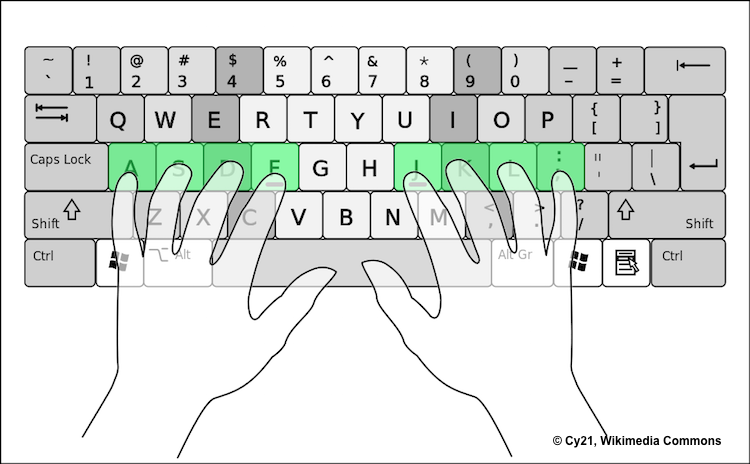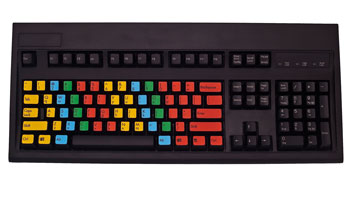
Keep in mind that it’s okay to fidget in your seat occasionally, but try to maintain good posture most of the time. Then, while working, check up on yourself from time to time and correct your posture, until you get used to sitting properly. As such, in order to position yourself properly at first, try to go through the above list, and modify each part of your body at a time.

Since most of us tend to sit with bad posture, it can be difficult to get used to making so many changes at once.

Essentially, you want to make sure that your wrists aren’t angled while you type, either upward or downward, since this places unnecessary strain on them.
#Finger position in keyboard full#
Make sure to place the keyboard so that you are centered on the lettered part. Many people center themselves against the full keyboard, including the number pad (which is usually on the right).There are several things to remember with regard to how your keyboard should be placed: Setting up your workspace properly is crucial, since it’s something that’s relatively easy to do, and which can help you type faster, feel more comfortable, and avoid most health issues. While typing, you should be thinking not only about the key that you’re hitting right now, but also about the next few keys that are going to follow it. This will allow you to type without unnecessary pauses, by ensuring that you are always ready to hit the next key in the sequence. In such cases, you will benefit more in the long term from modifying your typing technique, even if in the short term doing so slows you down and interferes with your ability to type in a consistent manner. The only time where being consistent is an issue is when you have a bad habit with regard to typing, such as when you use a specific typing pattern that slows you down or strains your hand somehow. You can ensure that you’re being consistent by using a specific typing system, such as the traditional touch-typing system, where each finger is responsible for a column of keys, and by keeping your hands relatively static over the keyboard. In general, the greater your consistency, the faster you will type. Try to be consistent with which fingers you use to press each key.
#Finger position in keyboard how to#
Note: later in the article, you will see a few ways to minimize how much your hands and fingers move while typing, including modifying your keyboard layout and learning how to touch type. Moving them around too much causes you to slow down and tires out your hands.

Try to keep your hands relatively static while you’re typing. Remember that even though the difference between a light keystroke and a strong one is relatively minor, it adds up significantly over time. Don’t strike the keys harder than you need to, since this can reduce your typing speed, and increase the stress that your hands experience while typing.

When you’re typing, try to use the minimal amount of force which is necessary in order to press each key. How to improve your typing technique Use a light touch when typing How to prevent repetitive strain injuries.Should you change your keyboard layout?.


 0 kommentar(er)
0 kommentar(er)
